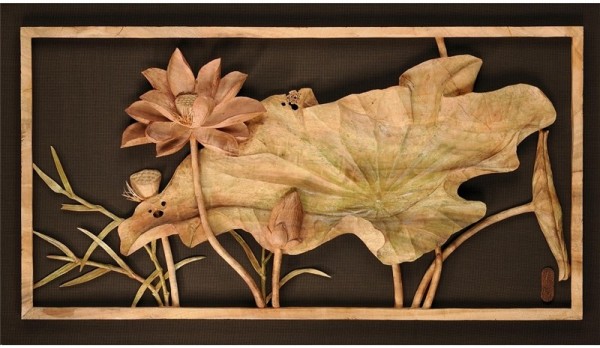- Chinese Name: 黃媽慶
- Date of Birth: 1952
- Birthplace: Changhua County (Central Taiwan)
- Did You Know That … ?
- The skilled sculptor, whose wooden snails appear as wet and slick as real life, often chooses such topics as fading vegetation to highlight the cyclical nature of life.
Huang Ma-ching is a Taiwanese wood sculptor renowned for creating idyllic sculptures depicting nature's superb beauty. He once said that he was inspired to carve many of his famous pieces simply by observing his daily surroundings, and that all he sought to do was to capture some of the natural world's vitality.
Huang was born and raised in the Changhua township of Lukang, the cradle of Taiwan's traditional artisan crafts. Due to his delicate health and temperament, he was considered unsuited for the vigorous lifestyle of the village's fishermen, so he opted instead to pursue woodwork and took up a full-time apprenticeship at the age of 14.
The young craftsman soon excelled at conventional Taiwanese woodwork such as deity statues and the chariots used to transport such worshipped figurines, but he yearned for something beyond the commercialism and mass production of customary temple products. At the age of 40, more than a half decade later into his temple supplies business, Huang decided to switch tracks and embrace the artistic freedom of expression.
The outcome was as rewarding for Taiwan's arts scene as it was for the sculptor. His "Quiet Observations (自然系列)” collection featuring garden plants, petite snails, and baby frogs evokes the simplicity and inexplicable joys of childhood, whereas his eerily accurate wooden replicas of Taiwan's indigenous aquatic species such as the Formosan landlocked salmon and the Asian tri-spine horseshoe crab has earned him the nickname of "Fisherman Sculptor.”
Today, Huang's most famous piece of artwork is showcased in mainland China. "Lotus Blossoms Quivering in the Wind (荷風蓮開),” a 1.1-meter-long camphor wood carving, was chosen by the Taipei-based Straits Exchange Foundation and presented as a token of goodwill to Beijing's Association for Relations Across the Taiwan Straits in 2010 after both parties formally signed the landmark Economic Cooperation Framework Agreement (ECFA).
Media Gallery
Related Links
